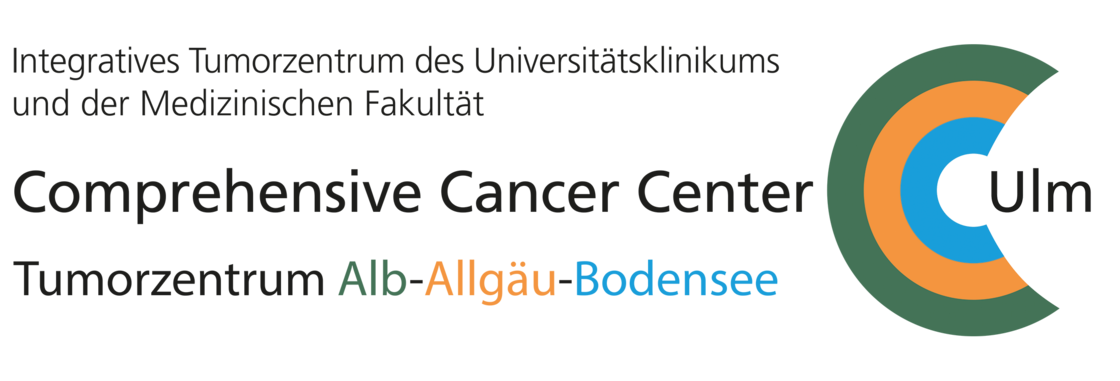- internistic

Prof. Dr. med. Martin Wagner
Stellvertretender Ärztlicher Direktor, Klinik für Innere Medizin I

Dr. med. Roza Sabia
Funktionsoberärztin Sektion Endokrinologie, Fachärztin für Innere Medizin, Endokrinologie und Diabetologie, Zusatzbezeichnung Ernährungsmedizin
Schwerpunkte
Endokrinologie
- Surgical
- Nuclear medicine
Description of the disease
Thyroid carcinoma is a malignant tumour of the thyroid gland. It is the most common malignancy of the endocrine (hormonal) system, but is very rare overall, accounting for around 1% of all malignant tumours.
Mortality due to thyroid carcinoma has fallen in recent decades as a result of earlier diagnosis, more effective treatment options and a decreasing proportion of prognostically unfavourable forms.
In thyroid carcinomas, a distinction is made between papillary (PTC) and follicular (FTC) carcinomas originating from the follicular cells of the thyroid gland - often grouped together as differentiated tumours - and anaplastic (ATC) and medullary thyroid carcinomas (MTC) originating from the parafollicular cells (so-called C-cells).
The percentage distribution of the different histological types of thyroid carcinoma is as follows: papillary 80-90%, follicular 5-10%, medullary up to 10% and anaplastic 3-5%. So-called sarcomas, lymphomas and metastases of the thyroid gland are extremely rare.
Papillary carcinomas have an age peak between the ages of 35 and 60, follicular carcinomas between the ages of 40 and 50. Anaplastic carcinomas are rare before the age of 40; the peak incidence is between the ages of 70 and 80. The age of patients with medullary thyroid carcinoma is highly variable; there is no recognisable peak in the age distribution. Geographical and ethnic differences in the incidence rate of thyroid carcinoma have been described. Incidence refers to the number of new cases under certain criteria.
While differentiated thyroid carcinomas (PCT and FTC) have a very good prognosis with 10-year survival rates of over 90%, anaplastic carcinoma is one of the most aggressive malignant tumours. Anaplastic thyroid carcinoma is characterised by a poor response to therapy and usually leads to death within a short period of time.
Causes and risk factors
Thyroid carcinomas are caused by genetic changes in the cells of the thyroid tissue, which lead to uncontrolled tumour growth and spread to neighbouring structures (infiltration) and distant organs (metastases). The trigger for these genetic changes is unknown in the majority of cases.
The incidence of thyroid carcinoma increases with age. Age is also an important prognostic factor: thyroid carcinoma at a young age (< 20 years) or in older people (>45 years) is associated with a poorer prognosis. Thyroid carcinoma is twice as common in women as in men, but males are associated with a poorer prognosis.
Previous radiotherapy to the neck region (e.g. for the treatment of lymphoma) increases the risk of developing thyroid cancer. The time between exposure and diagnosis of thyroid carcinoma is between five and 30 years.
Following radiation accidents such as the Chernobyl reactor disaster in 1986, the incidence of thyroid cancer increased by a factor of around 30, particularly in children.
An iodine deficiency can favour the development of differentiated thyroid carcinomas, especially follicular carcinomas. Improved iodine intake, for example through increased iodine intake with food, taking iodine tablets or iodising table salt, has led to a reduction in anaplastic thyroid carcinomas.
A special feature of thyroid carcinomas is their frequent occurrence as hereditary (familial) carcinomas. Approximately 5% (papillary/follicular carcinoma) to 30% (medullary carcinoma) of all cases can be attributed to a familial form of thyroid carcinoma, which requires special treatment and aftercare.
Mutations of the RET tumour gene have been identified as the cause of familial medullary thyroid carcinoma. RET gene diagnostics plays an outstanding role in this tumour, on the one hand for the treatment and aftercare of affected patients, and on the other hand for the counselling, diagnosis and (if necessary) also for the preventive therapy of affected family members.
Signs of illness
Thyroid carcinomas can be felt on the neck of many patients as rough, usually painless lumps, provided they have reached a certain size (usually >2 cm). A rapid increase in size is particularly suspicious for a carcinoma. A coarse, palpable cervical lymph node can also be a sign of an already metastasised (usually papillary) thyroid carcinoma. New onset of dysphagia and hoarseness may indicate an advanced carcinoma.
In many cases, however, affected patients show no typical signs of the disease, so that the diagnosis is often made after an ultrasound examination and thyroid surgery.
Diagnostik, Therapie und Prognose
Weitere Informationen zu Diagnostik, Theratpie, Prognose siehe: www.krebsinformationsdienst.de/schilddruesenkrebs
Blauer Ratgeber der Deutschen Krebshilfe: www.krebshilfe.de/die-blauen-ratgeber

